Otaru Ukiyo-e Museum

This work depicts Takashima Ohisa, the leading lady at a teahouse in Ryōgoku. It captures her waving a handheld folding fan. Her hair is done up in the Shimada style and embellished with a green tortoiseshell comb, evoking the lively air of a 17-year-old young woman. The first printing of this piece was accompanied by a comic tanka poem celebrating her fame, but in 1793, the practice of including the names of the beautiful women depicted in nishiki-e works was banned and subsequent prints had her name erased. When placed side by side with a similar work depicting Naniwaya Okita, the women appear to face each other.
Kitagawa Utamaro is a late Edo period ukiyo-e artist considered the preeminent artist for portraits of beautiful women. He took the world by storm with his upper body portraits of beautiful women. Using harlots from the Yoshiwara district and townswomen of good reputation as his models, Utamaro depicted the delicate nuances of their facial expressions and gestures to capture the subtleties of these women's hearts.
This piece is based on a May, 1794 performance of the play Koinyōbō Somewake Tazuna at the Kabuki theater Kawarasakiza. It depicts the scene when Ippei, a servant of Date no Yosaku, is assaulted by Yakko Edobei at the behest of the evil retainer Washizuka Happeiji. As Ippei confronts the villain with katana in hand, his face is overwrought with tension. The 300 ryō stolen during the assault was entrusted to Ippei by his master, a young lord, and intended to serve as ransom for the courtesan Iroha. Because of the subject’s red undershirt, this piece is sometimes referred to affectionately as “Aka Juban.”
Tōshūsai Sharaku is an ukiyo-e artist who primarily made actor prints. In 1794 he published a series of 28 actor prints with luxurious mica backgrounds that skyrocketed him to fame in the ukiyo-e world. Sharaku's works, which ruthlessly exaggerated the idiosyncrasies of actors, were highly innovative and unconventional in an era when prints with idealized depictions reigned. For this reason, public opinion on his works was divided. Later on, within a period of just 10 months, he published over 140 actor and sumo wrestler prints. While there are many theories about his identity, the most plausible one suggests he might have been Saitō Jūrōbei, a Noh actor employed by the Hachisuka Clan of the Awa domain.
Amid the massive, rolling waves, one can make out the forms of three oshiokuribune (small, high-speed vessels that were used to deliver fresh fish to Edo). The people aboard the boats cling desperately to the rails, conveying the fierceness of the surging waters. By contrast, Mt. Fuji enshrined beneath the wave’s crest, evoking an impressive balance between the opposing characteristics of motion and stillness, proximity and distance.
Katsushika Hokusai is an ukiyo-e artist from the late Edo period. While he is best known for landscape prints such as Thirty-Six Views of Mount Fuji, Hokusai was a prolific producer of woodblock-printed books and hand-painted works that spanned a wide range of genres, including portraits of beautiful women, flowers and birds, and supernatural creatures. Devoting most of the 90 years of his long life to his craft, he continued to explore new forms of expression through his exceptional rendering and compositional skills, maintaining a fervent creative spirit even in his later years. Many extraordinary anecdotes about his life remain, including how he changed his name nearly 30 times and his residence 93 times.
A single print from Fifty-three Stations of the Tōkaidō Road, the series that established Utagawa Hiroshige’s reputation as an artist. While the Kanbara region is one that usually goes without snowfall, depicting it as a single snow-white expanse where two groups of travelers pass each other by evokes the loneliness of travel and a sentimental atmosphere.
UTAGAWA Hiroshige is an ukiyo-e artist from the late Edo period. His complete set of Fifty-Three Stations of the Tōkaidō published in 1834 to 1836 was a huge hit. After this success, he released several landscape print series depicting scenes along highways and in the Edo townscape, establishing his popularity as a master of landscape woodblock prints. Hiroshige's landscape prints are characterized by a lyrical style that skillfully incorporates such elements as seasons, weather, and time. Moreover, the lively expressions and poses of the figures in his prints reveal his warm view of human life.
An iconic work by Utagawa Kuniyoshi, an artist who was known as a master at depicting heroic samurai. It is based on the book Utō Yasukata Chūgiden, by the author Santō Kyōden and depicts the scene when Ōya Tarō Mitsukuni dares to enter the barren landscape of the ruined palace at Sōma. In the story, the evil sorceress Takiyasha Hime summons hundreds of skeltons, but in Kuniyoshi’s painting, we instead see one giant skelton that imposes itself on the frame.
Utagawa Kuniyoshi is an ukiyo-e artist from the late Edo period who primarily made warrior prints. Kuniyoshi's warrior prints are characterized by the powerful forms of the figures and his dynamic compositions, especially his series of triptychs of large panels, which continue to amaze viewers to this day. In addition to his warrior prints, Kuniyoshi showcased his talent in humorous satirical prints and a wide range of other genres including landscapes and beautiful women that often incorporated Western influences.